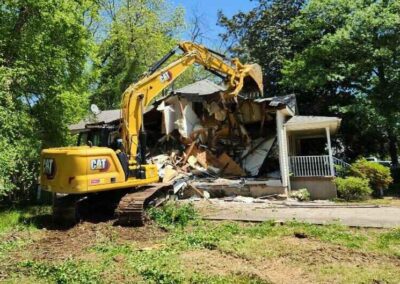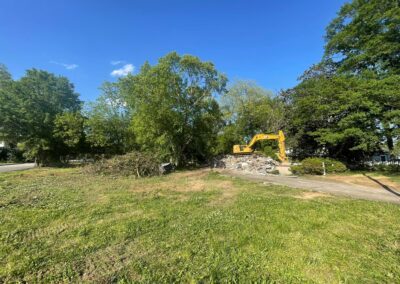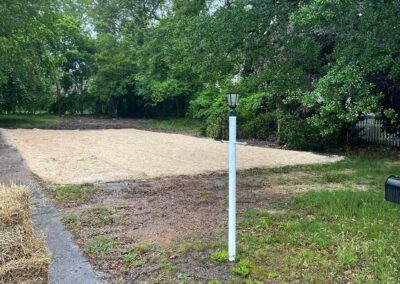Nestled beneath a canopy of mature oaks and maples, this single‐story bungalow—with its classic white vinyl siding, welcoming front porch, and broad concrete driveway—has long served as a quiet neighborhood anchor. Now, as part of a comprehensive redevelopment plan, the structure is slated for demolition. The project unfolds in three distinct phases, each carefully orchestrated to ensure safety, environmental stewardship, and community sensitivity.
Phase 1: Site Preparation
Before any heavy machinery arrives, the site undergoes a thorough hazard assessment. Utility lines are identified and capped: gas, water, and electricity are safely disconnected. Salvageable materials—windows, doors, decorative railings, and even select lumber—are cataloged for reuse or recycling. Protective fencing is erected around the perimeter, and dust‐control measures, including water misting systems and sediment barriers, are put in place to minimize airborne particulates and preserve adjacent landscaping.
Phase 2: Structural Demolition
With the site secured, an excavator with a hydraulic claw begins dismantling the front porch and roofline, carefully working from the top down to prevent uncontrolled collapse. Crews systematically remove exterior walls and interior partitions, feeding debris into a front‐load dumpster. As load capacities are reached, materials are segregated into metal, wood, and mixed construction waste. A magnet attachment on the skid steer efficiently recovers embedded nails and fasteners, reducing risk of puncture hazards.
Phase 3: Site Clearance & Grading
After the structure is fully razed, remaining foundation slabs and footings are broken into manageable segments with a jackhammer attachment. Concrete rubble is crushed on‐site and screened for aggregate reuse in future backfill. Final grading equipment levels the lot, ensuring proper drainage and preparing the site for its next chapter. A fresh layer of topsoil is spread where grass once grew, and erosion‐control mats are laid to stabilize the soil.
Throughout the process, the demolition team adheres to local regulations and environmental guidelines, prioritizing neighborly respect—working within daylight hours, maintaining clean streets, and conducting daily safety briefings. By project’s end, the humble bungalow will be gone, leaving behind a clear, level canvas ready for the community’s evolving vision.




